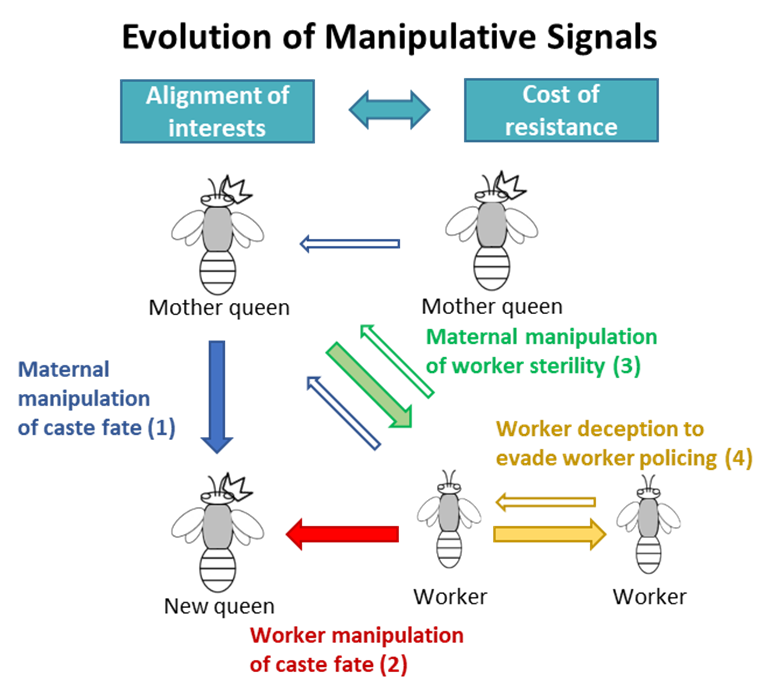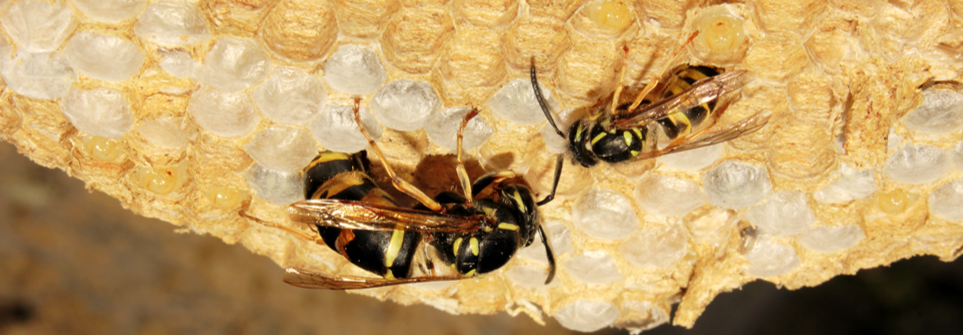The central topic of our research is the study of the evolution of conflict and cooperation in biological systems, for which we use social insects as our key model system.
The evolution and inheritance of superorganismal traits

Social behaviour is ubiquitous in nature, and lies at the heart of the so-called major transitions in evolution, which resulted in the progressive evolution of eukaryotic cells, multicellular organisms and animal societies. The absolute pinnacle of sociality is reached in some insect societies, where colonies can behave in such a highly integrated and coordinated fashion that they are often referred to as superorganisms. Major questions, however, remain in our understanding of how superorganismal traits evolve, and how they are inherited across generations. In the present project we will study three major outstanding questions in the field : (i) how superorganismal traits are inherited across generations, (ii) how lower-level individual phenotypes map onto higher-level social traits and (iii) how complex rules of self-organization can evolve under the influence of natural selection. With respect to the inheritance of superorganismal traits we will also investigate to what extent social syndromes could be encoded by supergenes and test if some superorganismal traits could be acquired via social learning and be transmitted culturally across generations. In terms of techniques the project will use a combination of state-of-the-art techniques, ranging from next-gen sequencing approaches and genome-wide association studies to evolutionary multiagent simulations. Overall, this project will provide a unique and very broad perspective on how superorganismal traits evolve in nature.
The evolutionary ecology of manipulative and deceptive signals in insect societies

Animal communication signals typically evolve because of a shared interest between the signaling and receiver individuals. In the present project we are making the first systematic empirical and theoretical study of another class of signals, where the receiver instead is partly manipulated or “deceived”. To do so, we are studying how four classes of manipulative signals that have been previously proposed can evolve and be stably maintained. Key aspects that will be studied include exploitation of pre-existing receiver physiology and the costs of evolving counter-resistance strategies. Overall, this will provide key insights into the evolution of manipulation and deceit in animal societies, and how this affect the resolution of intrafamily conflicts.
